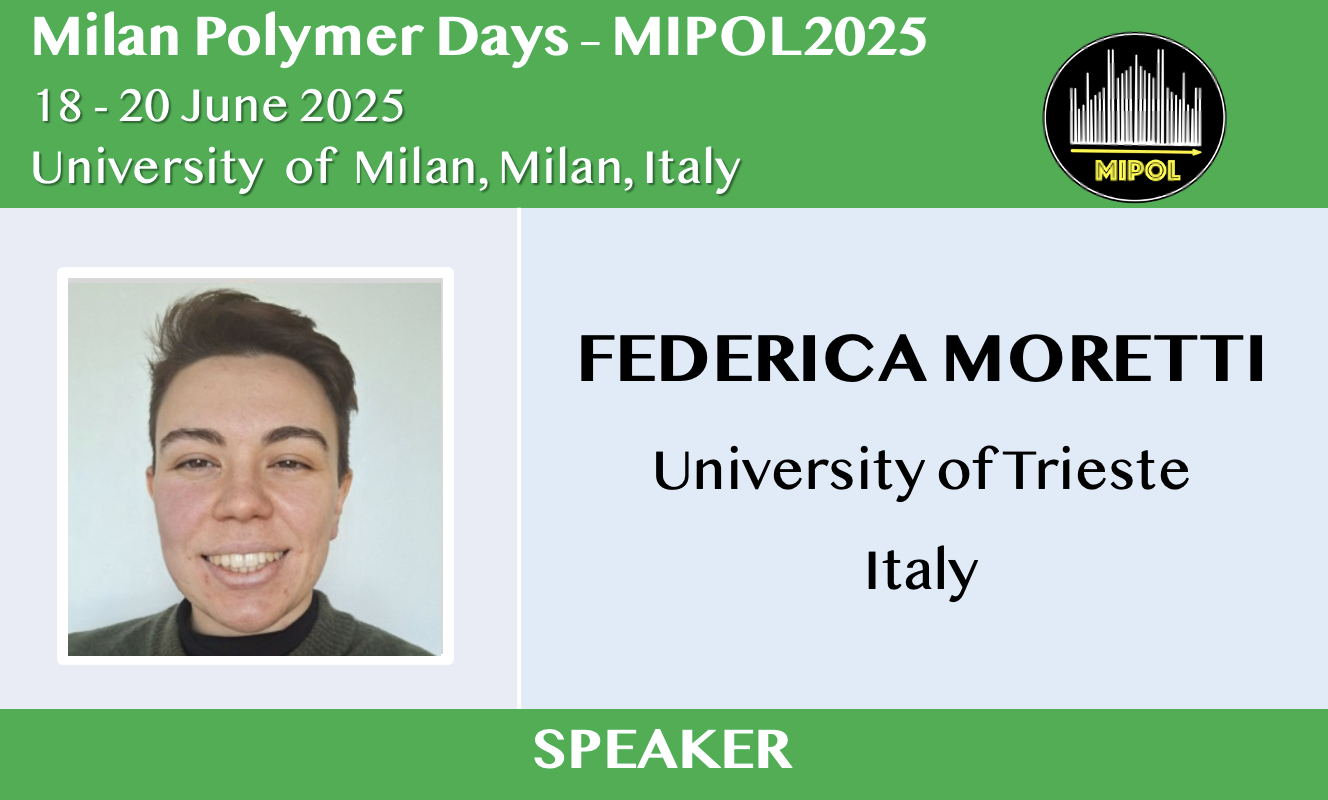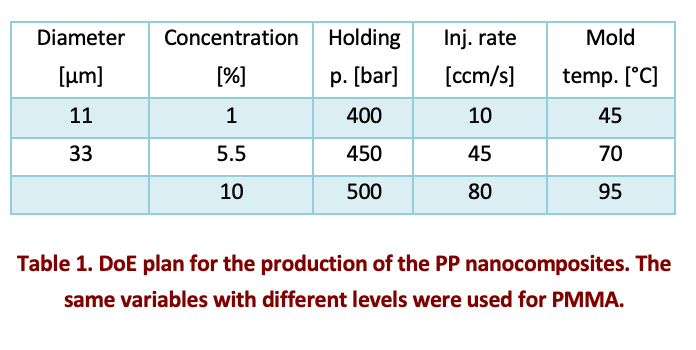Optimizing injection molding of polymeric nanocomposites via d-optimal design of experiments
Abstract

The design of experiments (DoE) approach is often used when dealing with a large number of influencing factors. The main goal of this technique, which has deep statistical roots, is to link the effect of several factors to the value of a desired response variable exploiting a mathematical model. Frequently, the studied factors are associated with process parameters and the response variable is a measurable property of the material. In this context, such method is applied to find an optimum of the process, referring to a specific property. Of course, when considering different responses (e.g. stiffness or shrinkage) the resulting optimum may differ even in the same process conditions.
This research aims at applying a DoE plan to the injection molding production of nanocomposite plates and bars consisting of a PMMA or PP matrix filled with aluminum flakes [2]. Generally, polymer-aluminum nanocomposites are exploited in the design industry. It is of great interest to extend their possible range of applications, and to this purpose a more detailed study is required. The properties of interest in this context are specular reflectivity, surface roughness and flexural modulus. The layout involves the following factors: polymer matrix, diameter and concentration of the flakes, holding pressure, volumetric injection rate and mold temperature (Table 1). In order to expand the range of available temperatures of the mold, a variotherm system [3] was implemented. This enables a sophisticated control of the temperature of the mold during each injection cycle and, for amorphous polymers, to set it above the glass transition value before injection. The applied DoE was elaborated using a D-optimal [1] design to reduce the total number of experiments to twenty-five.
Regarding the properties considered as DoE responses, three replicates for each experimental point were involved. The specular reflectivity was measured via spectrophotometry (Cary 60, Agilent Technologies) with a thirty-degrees fixed-angle reflectance accessory. Atomic force microscopy (SolverPro, NT-MDT) was used to assess the surface roughness and four-point bending tests (AGS-X, Shimadzu) were exploited to investigate the flexural modulus of the nanocomposites. When placed in a polymeric matrix, some aluminum flakes tend to migrate to the surface and form surface cavities due to the differential shrinkage after demolding [2]. The extent of this phenomenon is a function of the considered matrix. The use of a variotherm approach and a sufficiently high temperature during the filling of the mold can help to mitigate such problem. Accordingly, the DoE highlights the elevated temperature of the mold as strongly relevant to boost the specular reflectivity and decrease the surface roughness. At lower mold temperatures there is an almost linear relationship between the flakes’ concentration and the roughness, which is not present when working at higher temperatures. Consequently, at a high mold temperature an increase in the flakes’ concentration can be exploited to promote the specular reflectivity. However, the presence of the flakes decreases the flexural modulus compared to the matrix itself. The precise relationships among the factors have been deeply studied through contour plots [1] and appropriate graphs.

References
- L. Eriksson, E. Johansson, N. Kettaneh-Wold, C. Wikström, S. Wold, Design of Experiments: Principles and Applications, 3rd edition, 2008, Stockholm, Sweden, Umetrics.
- X. Hong, X. Xiao, Z. Zhang, J. Yang, J, Zhang Polym. Eng. Sci. 2018, 58, 642.
- A. Zhang, G. Zhao, Y. Guan J. Appl. Polym. Sci., 2015, 132, 41420.
Acknowledgments
Fellowship co-funded by the Italian Recovery and Resilience Plan (PNRR) – NextGeneration EU. This work has also been technically and financially supported by Honeywell Pittway Tecnologica Trieste.

